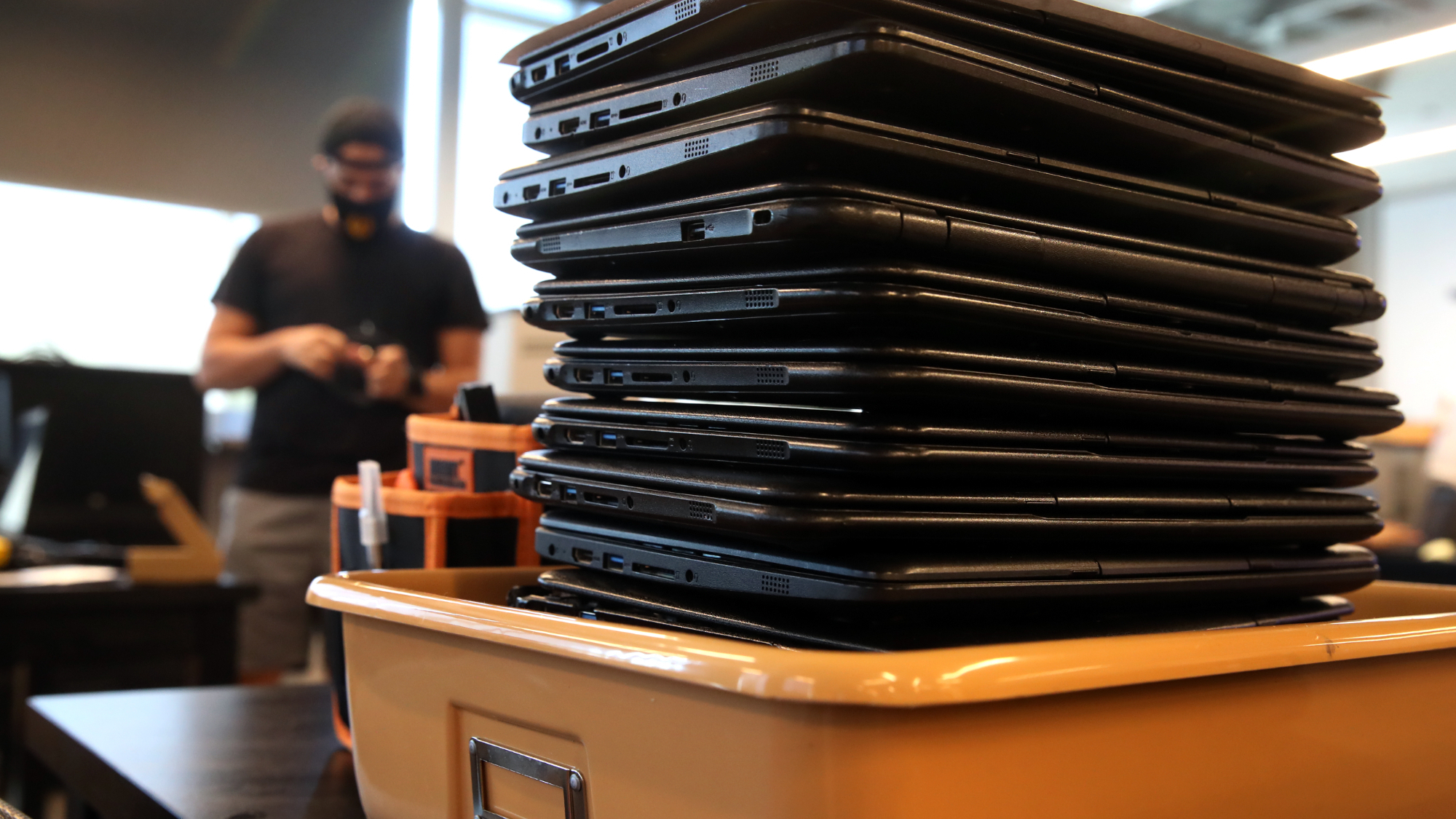
Report shows that the lack of sustainability of Chromebooks provided for schools is hurting the environment.
One of the most essential school supplies for public school students has a sustainability problem. A report from the non-profit consumer advocacy group PIRG says that the planned obsolescence of public school-provided Google Chromebooks is costly to taxpayers and the environment.
The biggest contributor to “Chromebook churn” is that these devices provided for students last, on average, about four years, claims PIRG. As of March 2021, 48.1 million K-12 students have been provided Chromebooks, and remote learning has become more commonplace due to the pandemic. This means a student will go through several Chromebooks throughout their school career.
A couple of factors contribute to the churn; the first and most common is that the Chromebook OS essentially has an expiration date, after which it can no longer receive updates, and school systems are forced to upgrade to newer versions of the device. Many public school systems require fully up-to-date hardware in order to access their online testing services.
Another factor is that Chromebooks are notoriously hard to repair, and spare parts are hard to come by and often not compatible across different models. Schools are then forced to buy new devices because tossing the broken Chromebook is less of a hassle than fixing it. And since roughly only a third of the entire Chromebook is recyclable, most of it sits as electronic waste.
(Image credit: Future)
Best gaming PC: The top pre-built machines from the pros
Best gaming laptop: Perfect notebooks for mobile gaming
PIRG does suggest a couple of short-term solutions; the first is extending the life of Chrome OS software to 10 years after the product’s launch date. Often perfectly fine Chromebooks end up in a trash heap because Google killed its support.
“Every ChromeOS device receives regular updates from Google until it reaches its Auto Update Expiration (AUE) date,” says Google’s update policy page. Though this page does provide some counter-examples to PIRG’s OS longevity concern: the 2021 Acer Chromebook C722, for example, has an update expiration of June 2028, 7.5 years after its debut. Enterprise-oriented systems tend to have even longer update periods, so that 10 year ask doesn’t sound unreasonable.
The second and more complex solution is for Google to pressure Chromebook manufacturers to improve repairability by increasing the production of compatible spare parts across multiple models, extending the products’ lifespan. The report claims that doubling the lifespan of Chromebooks sold in 2020 would have reduced carbon pollution, equaling 909,000 cars on the road.
Planned obsolescence is something we see a lot with phones. Apple has been sued numerous times in Europe over its planned obsolescence of the iPhone 6.
Public schools won’t be shifting away from giving Chromebooks to students anytime soon. Still, at the rate that this technology is failing, it’ll cost some school districts millions of dollars to replace these dying devices.
The idea of a 100% sustainable laptop isn’t a far out idea. Last year, Dell showed off a prototype 13-inch modular laptop made of fully recyclable and reusable parts that can help reduce the amount of overall e-waste from laptops, hoping it’ll inspire laptop makers to adopt a similar program. And Framework’s heavily customizable, upgradeable laptop presents another possible less wasteful future.






